Gibbon Diet And Other Gibbon Facts
Murphy ScottGibbon or small humanoid monkeys are a family of primates living in Southeast Asia. The gibbons are the closest family to hominids and together with them form the superfamily Hominoidea. Sometimes gibbons are included in the Hominidae family as a subfamily Hylobatinae – “small hominids”.
Distribution of Gibbon
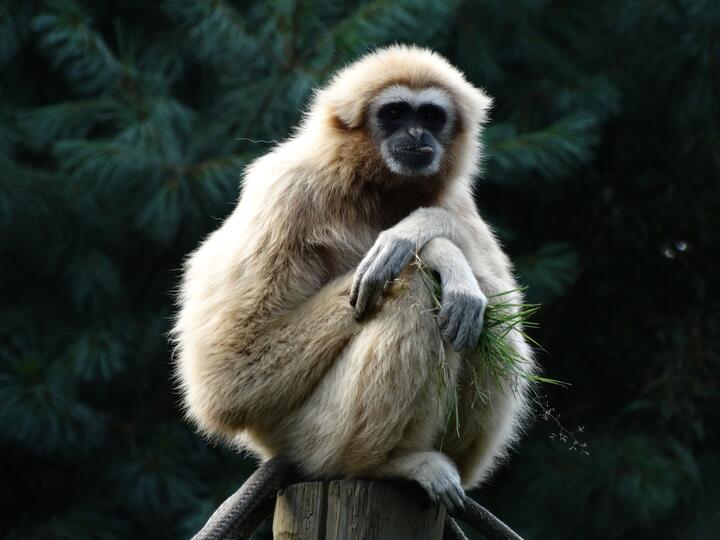 Photo by Pixabay on pexels
Photo by Pixabay on pexelsThe area where the gibbons meet stretches from northeastern India, Myanmar, and southern China to the Malay Peninsula and the Indonesian islands of Kalimantan and Java. In earlier times, gibbons were distributed over a much larger territory: at the beginning of the second millennium, they were found almost all over China. The main habitat is tropical forests, and sometimes gibbons species can also be found in mountain forests at altitudes up to 1800 meters.
Appearance of Gibbon
Depending on the species, gibbons can be smaller or bigger, the color of their wool also depends on the habitat and the specific species. On average, gibbons weigh from 4 to 13 kilograms. The length of their body may vary from 45 to 90 centimeters.
Siamang is the only type of gibbons that has throat bags resonators.
Gibbons have a slender, lean body; they are distinguished from many other monkeys by the lack of a tail. These apes are some of the most progressive in their squad.
These mammals have 32 teeth in their mouths, just like humans. Also, we are “related” to the gibbons and the presence of blood groups II, III, IV (gibbons do not have only type I).
In all species of this family, the body is covered with a thick hair cover. Without hair, the gibbons have only palms, face, and sciatic calluses. Absolutely all gibbons have black skin. As for the shades of wool, it is often either monochrome (dark) or with small marks of light shades. However, some species also have light fur.
The limbs of gibbons are very different in length: the hind ones are much shorter than the front ones. By the way, the “hands” of these primates are much longer than the torso (almost twice!), which is why they easily rest on the palms, standing upright. Unlike other monkeys, gibbons prefer “straightness” even when they are at a great height (somewhere in a tree). Adults reach a body length of about 40-60 cm and a weight of about 4.5-7.5 kg. The body is slender and covered with a completely thick fur, painted yellowish-single color. The face of the head is hairless. Black face skin is bordered with light wool.
Hands long and strong, on long and narrow palms with five fingers. The first finger is strongly shifted towards the wrist. The skin on the soles of the feet, like on the palms, is hairless and black. The opposing first fingers give the feet a tightness. The brushes and feet are white. Tusks are sharp and long. Eyes close-set, with brown rainbows.
White gibbons are listed in the Red List of endangered species. Predation hunting and destruction of natural habitat have put them on the verge of complete extinction. The local population traditionally eats monkey meat for health-improving purposes.
Gibbon diet
Gibbons have adapted to live in the trees of the evergreen tropical forest. Here at any time of year, you can find fruit-bearing species of lianas and trees, so that the favorite primate fruits are provided all year round. In addition to fruits in large quantities, they eat leaves, as well as invertebrates – the main source of animal protein for them.
Unlike monkeys, which are usually fed in large groups and can digest even immature fruits, gibbons choose only ripe fruits. Before picking even a small fruit, the monkey always tests it for ripeness by pressing between his thumb and index finger. The immature primate fruit is left on the tree to allow it to sleep.
Family life
An adult pair of gibbons gives birth to one calf every 2-3 years. That’s why in the family group usually there are from 2 to 4 immature individuals.
Pregnancy lasts 7-8 months, the calf mother feeds until the second year of life.
Siamangs show extraordinary care for the offspring. The calf becomes independent only at the age of 3 years. By the age of six young gibbons fully grow up and begin to communicate with their peers in a friendly manner. With adult males, they have both friendly and hostile contacts, and with adult females, they try not to communicate at all. Only by the age of 8 young people are completely separated from their native family.
Young males often sing alone, trying to attract females. Often, they are looking for her, wandering through the woods. It is clear that the first counterpart is not necessarily a suitable partner, it will take more than one attempt to find “his only”.
Gibbons are not as sociable monkeys as, for example, chimpanzees. Within a group, they do not often exchange sound or visual signals. This applies even to siamangs, who have expressive faces and a rich vocal repertoire. Mutual combing of wool is perhaps one of the main types of social interaction in gibbons. But the most expressive social manifestation is singing, which has already been described above. Usually, each square kilometer of the forest lives from two to four-family groups. Families move about 1.5 km per day within their own plot of land, which covers an area of 30-40 hectares. Although siamangs are almost twice as big as other gibbons, the area of their forage area is smaller, they move smaller too, and eat more and more affordable food – leaves.
Preservation of gibbons in nature
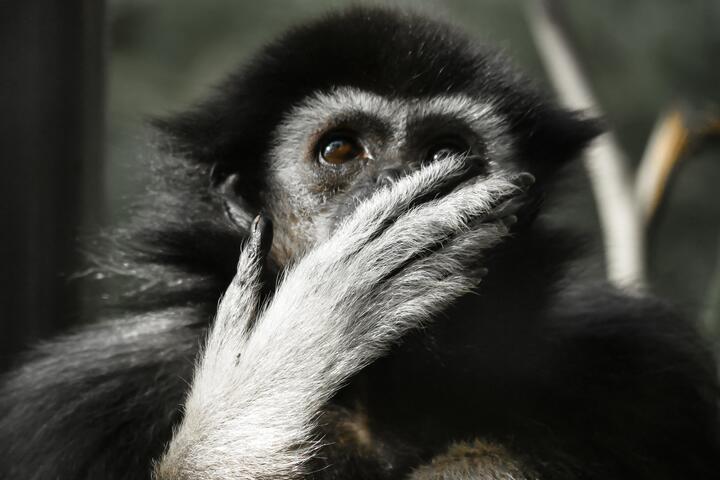 Photo by Pixabay on pexels
Photo by Pixabay on pexelsThe destruction of evergreen rainforests in southeast Asia raises questions about the existence of gibbons shortly.
In 1975, their number was estimated at 4 million, but now there are fears that some species will not be able to maintain even a minimum number sufficient to survive. The massive logging of timber causes 1000 gibbons to leave their habitats every year. As a result, their numbers are drastically decreasing. However, it is clear that the silver Gibbon and the Kloss gibbon, as well as some of the shaggy gibbons, are already close to extinction.
To save these unique apes, it is necessary to preserve their habitats first. Gibbons are forest dwellers. They do not pose a danger to humans as vectors of parasites and pathogens. Because of their external resemblance to humans and a high level of intelligence, the local population of Indonesia and the Malay Peninsula honor the Gibbons as gracious spirits of the forest and never hunt them. However, they continue to die because of people – those who appeared in these places recently, those responsible for the destruction of all animals indiscriminately.
Gibbon Songs
Among other monkeys, the gibbons are famous primarily for their screams, or rather songs. Perhaps these are some of the most amazing and unusual sounds that can be heard in the tropical forests of Asia. At the same time, the singing is spread over several kilometers.
The single singing of a male is most often heard before sunrise. Aria begins with a series of soft simple trills, which gradually grow into a series of more complex loud sounds. The song ends at dawn. In a fast gibbon, for example, the final part of the aria is twice as long as the first part and contains twice as many notes. The final scream of the gibbon Kloss is called a “fluttering song”.
Females usually start singing in the late morning. Their song is shorter and less variational. They just repeat the same melody over and over again. But even despite the repetition, it makes an indelible impression. The so-called “great song” of the female lasts from 7 to 30 seconds.
Life expectancy
The life expectancy of Lar gibbons in natural conditions is about 30 years.
Interesting and fun facts about gibbons
•Most subspecies of gibbons eat only fruits.
•Gibbons are tailless monkeys with glossy black body hair. They often have white marks on their face, hands, and feet.
•Gibbons have strong, hook-shaped arms that they use to grab, unusually large arms (for all types of gibbons), larger than their legs.
•The shoulders of gibbons are folded so that they can travel long distances on the arms along the branches. They can reach speeds of up to fifty-six kilometers per hour.
•Gibbons defend their territory with daily singing rituals that start at around nine o’clock in the morning and last for about an hour. These loud songs can be heard in two to three kilometers.
•Gibbons eat at least one hundred and sixty plant species, their favorite food is fruit and rice, however, sometimes they eat insects, bird eggs, and small vertebrates.
•Gibbons are monogamous, they are one of the few primate species that create the only pair for life. They live in a family that consists of four or six individuals.
•The pack of Gibbons consists of a dominant male, a dominant female, calves, and less dominant individuals. The latter leaves the flock at the age of eight.
•50% of the gibbon’s waking time is resting. As a rule, they use a high tree for this purpose, on the branches of which lie on the stomach or the back.
•Gibbons have a highly developed brain, like all other primates.
•For adult gibbons, self-care is an important social ritual. Every day they spend up to fifteen minutes on it.
•The gestation period in female gibbons is from seven to seven and a half months. The gibbon female gives birth every two to three years. During its entire life, it rarely gives birth more than ten times.
•Gibbon babies are born with soft, rare hair, and they weigh very little.
•Gibbon cubs are removed from the breast after a year, but they stay with their mother until they turn five. Then they start their own family.
•The gibbon male takes great care of the calf after it is over eight months old.
•Gibbons can’t swim and avoid water.
•Each pair of gibbons creates their own unique song, which they can sing.
•The Gibbons have been listed by the International Union for Conservation of Nature as being in danger of extinction. Their survival is directly linked to the preservation of their natural habitat.
Gibbon Diet – What Do Gibbons Eat?
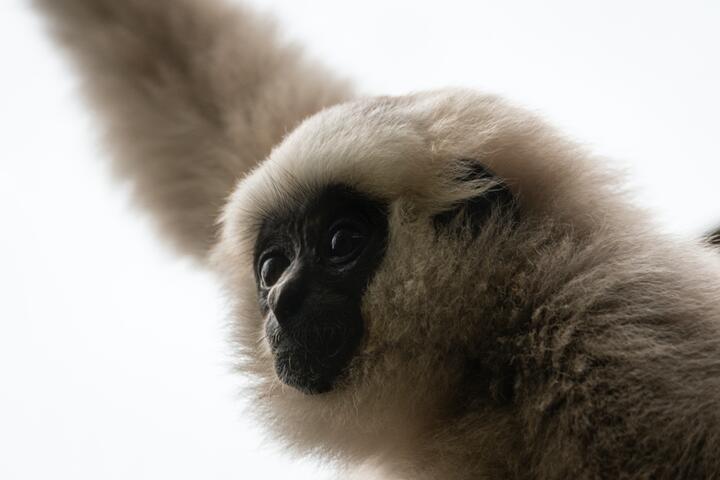 Photo by D H J on pexels
Photo by D H J on pexelsThe Gibbon diet consists of a wide range of plant parts. In addition to fruits, the monkeys also eat insects, bird eggs, and leaves. The main components of the gibbon diet are leaves and fruits. The diet of the gibbons shifted significantly throughout the year. The rainy season is marked by fruit, while the dry season is dominated by plant parts such as flowers and leaves. They start their daily activities early in the morning.
The Gibbon diet consists of fruits, as well as some plants and insects. The species of monkeys eat a variety of berries, leaves, and flower buds. They also eat tree vines and flower buds. Since gibbons are very selective eaters, they choose the fruits and nuts they like the best. The main food that the gibbons consume includes bananas, apples, and figs.
Gibbon’s diet includes a variety of nuts, fruits, and fungi. The nutmegs in this species are especially high in protein and contain a lot of omega-3 fatty acids. The nuts in their diet help them build strong muscles and provide the energy that they need to grow and thrive. The fruits and vegetables they eat are also high in vitamin C. It’s important to note that gibbons spend their entire lives in treetops and do not have a diet.
In contrast to chimpanzees, gibbons don’t exchange visual or sound signals with other animals. Their faces and voices are very expressive. They can communicate with each other through singing and combing. Their families move about 1.5 kilometers a day and cover 30-40 hectares of forest. They typically stay with their parents until they are six years old. If you’re wondering about the diet of a gibbon, you should keep in mind that it’s mostly planted, but some apes consume animal products too.
The diet of a gibbon is the same for most species. They eat mostly plant-based foods, insects, and small animals. Most gibbons live in the wild and depend on the fruits and nuts they eat for nutrition. Despite the similarities in their diet, they have different habits. Some are vegetarians, while others are vegan. Their bodies contain a variety of fats, which make them very healthy. Generally speaking, they eat a variety of fruits and vegetables.
Gibbon’s diet is composed of plants, fruits, and insects. They spend nine to ten hours a day active, eating, traveling, and socializing. In addition to fruit, the gibbons also eat flower buds, tree vines, and leaves. While the diet of the gibbon varies from species to species, their preferences are similar. If you’re a fan of the monkeys, you’ll love this fascinating creature.
The Black-crested gibbon eats fruit, leaves, and buds of trees, bushes, and ferns. The siamang gibbon has a higher rate of leaf-eating than other gibbon species, so it eats more leaves than other species. During the winter, it also eats insects. The black-crested and the red-headed gibbon are both endangered. The African population is expected to grow rapidly in the future, which means that the flora and fauna of the world is constantly changing.
The diet of the gibbon is rich in fruit. The gibbons are especially fond of figs, and they often eat leaves and insects. Because of their brachiation ability, they can reach fruit growing on branches. The female gibbon gives birth to a single young after a month of mating. The young stay with their parents for six to eight years. The male tends to take care of the young. The female is usually the main caregiver.
The baby gibbon primarily relies on its mother for care. Its mother will care for the young until they are a year old. After that, they will gain independence and will stay with their mothers until they are about six years old. This is why they need to be kept away from humans, and they should never be abused. These creatures are protected in the wild and will remain so, as long as they are not harmed.
The Gibbon is a social animal and lives in groups called “troops.” They spend their days searching for food, grooming one another, and breeding. Their males are monogamous and give birth to only one baby. Their gestation period is seven months. The females spend about half of their waking time sleeping and the other half is spent in active play. They are omnivores. However, they also eat insects in the forest.
- Wildlife7 Interesting Facts About Arctic Foxes

- InsectsAll About Ants With White WingsBy Amelia B
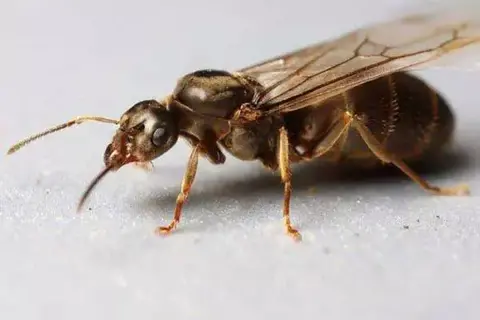
- WildlifeTop 10 Most Dangerous Animals In The WorldBy Amelia B
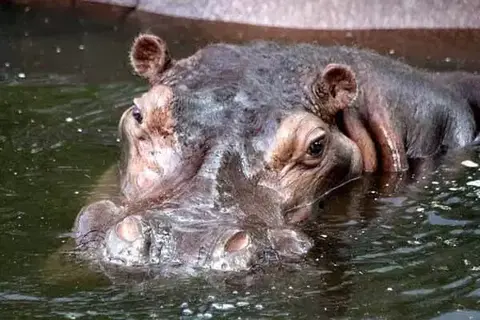
- Birds22 Interesting Facts About EaglesBy Lucas Torres

- Dogs12 Dog Movies That Will Have You In TearsBy Lucas Torres

- BirdsWhat Do Hawks Eat In The Wild?By Khai Dove
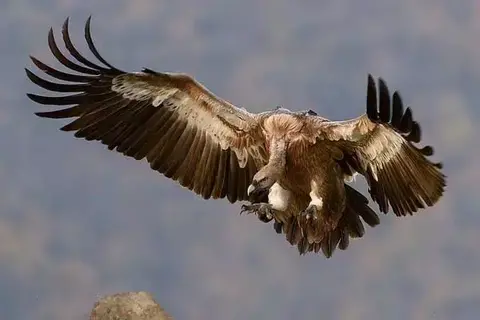
- WildlifeInteresting Facts About White TigersBy Noah Young
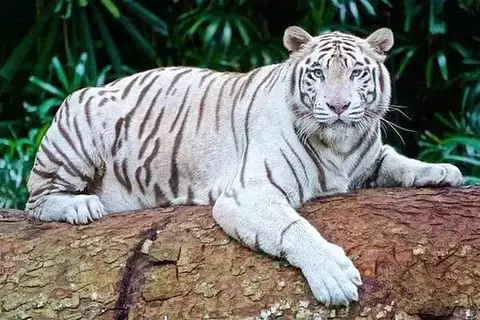
- BirdsThe Cockatoos Danced To The Anthem Of The Fight Against CoronavirusBy Camilo Walker

- WildlifeInteresting Facts About The MongooseBy Evelyn Star

- DogsThe Benefits Of Having A Dog FenceBy Evelyn Star
